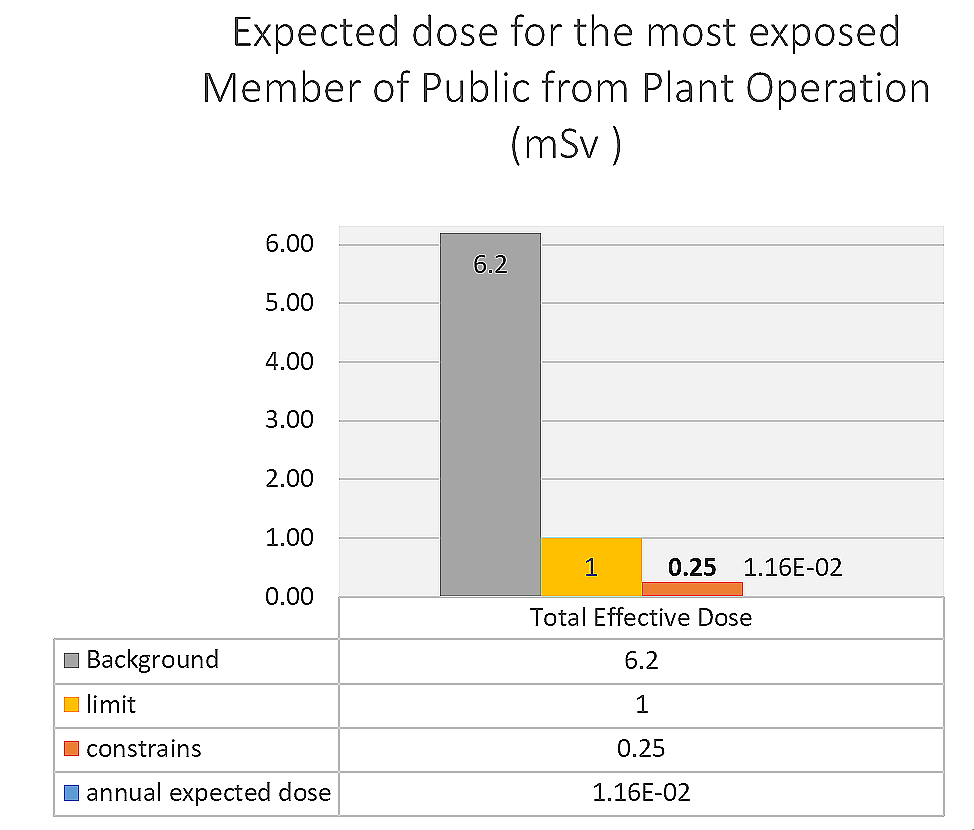Radiological Environmental Monitoring Laboratory
The Environmental Radiochemistry Laboratory (ERL) is one of the first divisions to begin operations at Nawah.
The laboratory functions are based on Radiological Environmental Program (REMP) requirements established in the Offsite Dose Calculation Manual (ODCM) to establish radiation baseline prior to the fuel load of the first reactor unit and to determine the level of background radiation found in the surrounding environment at Barakah site. This program will continue during the operation to monitor the plant operational activities to ensure the health and safety of the public. This program started in August of 2014, with the first report issued in early 2015. New reports are issued twice a year, covering monitoring periods from January to June and July to December. All the results from the sample analysis have shown the radiation levels are within the anticipated background levels.
A sampling program, which mimics the future operational program has been developed to provide the basis for the reference information which will be used for comparison with future sample results taken after plant startup. Sampling locations were selected on the basis of local ecology, release pathways, exposure pathways, meteorology, physical characteristics of the region, and demographic and land use features of the site and vicinity.
The number of sample points and the specific locations were determined based on operational conditions by considering locations where the highest offsite environmental concentrations have been predicted from plant effluent source terms, site hydrology, and site meteorological conditions.
Other factors considered were applicable regulations, population distribution, and ease of access to sampling stations, availability of samples at desired locations, security, and future program integrity. Currently within 40 kilometers of the Barakah plant site there are no milk and broadleaf vegetation sample locations indicated.
The laboratory has modern designed instruments to analyze the collected samples and real time radiation detectors that allow to quickly respond and collect and analyze air samples should increases in radiation levels be detected.
The Semi-Annual Radiological Environmental Operating Report (SAREOR), which contains results of background radiation levels in different samples such as soil, sediment, fish and invertebrates, air, seawater, ground water and drinking water, is submitted to Federal Authority for Nuclear Regulation (FANR).
Offsite Dose Calculation Manual (ODCM)
The Offsite Dose Calculation Manual (ODCM) program provides control to ensure that releases of gaseous and liquid effluents from the plants are below the approved limits established by FANR. The program sets effluent concentration limitations and dose constraints to ensure the public health and safety are maintained at all times.
The controls include sampling from gaseous and radioactive wastewater storage tanks before being released to the environment. Also, the discharge is monitored by an automated alarm feature of the Radiological Monitoring System that will terminate any release if it reaches the limitations set by the Barakah plant, these limitations constitute a small fraction of the limits set by FANR.
The impact of the plant on public health and safety is not expected to be significant, the design of the plant calculations indicated that the highest potential dose to the public surrounding the plant will not exceed 0.0116 millisevert per year, which constitutes less than 5% of the dose constrains set by the station of 0.25 millisevert. This expected dose constitutes less than 1.2% of the dose limit set by FANR and less than 0.2% of the natural radiation background in USA calculated established by USA National Council of Radiation Protection (NCRP) in “NCRP Report No. 160, Ionizing Radiation Exposure of the Population of the United States.”
